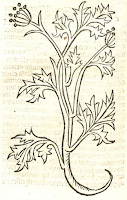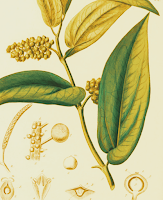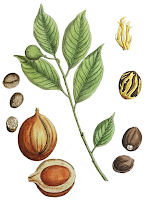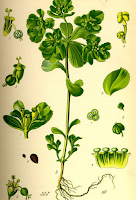HOME REMEDIES: GARDEN CHERVIL
St Hildegard writes:
"When God created man, a different type of earth was used to form him. Henceforth, all substances were subject to man, because they sensed that in him was life, and they endeavoured to aid him in him in all his efforts, and man's aim, in turn, was to help them."
GARDEN CHERVIL (CEREFOLIUM)
The garden chervil is dry in nature, but is more warm than cold. It grows neither through cold air, nor through strong air, nor through moisture in the soil, but in a weak atmosphere before the sun's warming rays are fruitful.
Humans derive neither benefit nor harm from consuming it, except that it heals INTESTINAL WOUNDS. To achieve the latter, you pound the chervil and add the squeezed juice to wine. This remedy may then be consumed regularly.
Against PAIN IN THE SPLEEN caused by the consumption of raw food, one makes a seasoning from chervil (cerefolium), some dill and wheat bread in vinegar and takes it often; after taking it apply a warm dressing of linseed.
To heal all sorts of SKIN ULCERS and against SCABIES, chervil (cerefolium) is mixed with three times as much polypodium and five times as much elfdock, and boiled it in water. Next, wring it out, add some fresh incense and sulfur to the colatur in a pan, and much more fresh lard than the amount of colatur combined. A thick ointment is prepared by evaporation by slow cooking the mixture over the fire. This remedy is applied to the ulcer for five days in a row. Afterwards, clean the skin with a bath.
(From: Physica, St Hildegard of Bingen)
FAVOURITE MEDIEVAL REMEDIES AGAINST
This translation is for informative purposes only. If you suffer from any illnesses or conditions, please seek medical help.




Comments
Post a Comment